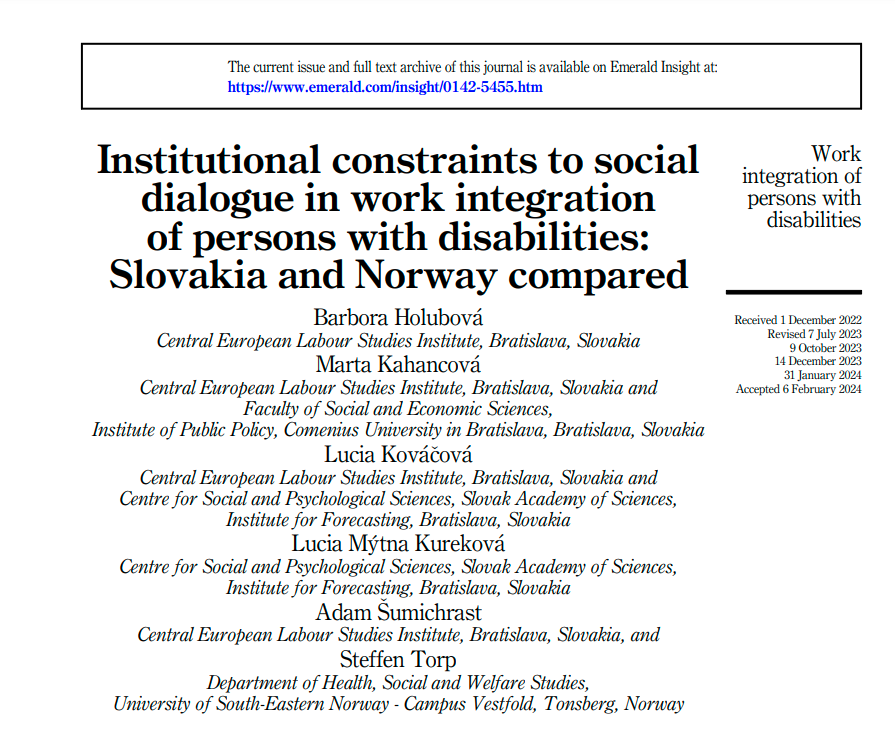Publications
CELSI team contributed to a journal article looking at work integration of persons with disabilities (PwD) and the role of social dialogue
CELSI team contributed to a journal article looking at work integration of persons with disabilities (PwD) and the role of social dialogue
Published on April 8, 2024 in Journal articles

CELSI researchers Barbora Holubová, Marta Kahancová, Lucia Kováčová and Adam Šumichrast, along with Lucia Mýtna Kureková and Steffen Torp, worked on a study that examines how the different systems of workers’ representation and industrial relations in Slovakia and Norway facilitate PwD work integration. Taking a social ecosystem perspective, they acknowledge the role of various stakeholders and their interactions in supporting PwD work integration. The paper’s conceptual contribution lies in including social dialogue actors in this ecosystem.
Purpose– Studies on the work integration of persons with disabilities (PwD) and the role of social dialogue therein are scarce. The study examines how the different systems of workers’ representation and industrial relations in Slovakia and Norway facilitate PwD work integration. Taking a social ecosystem perspective, we acknowledge the role of various stakeholders and their interactions in supporting PwD work integration. The paper’s conceptual contribution lies in including social dialogue actors in this ecosystem.
Design/methodology/approach– Evidence was collected via desk research, 35 semi-structured in-depth interviews with 51 respondents and stakeholder workshops in 2019–2020. Findings– The findings from Norway confirm the expected coordination of unions and employers in PwD work integration.
Evidence from Slovakia shows that in decentralised industrial relations systems, institutional constraints beyond the workplace determine employers’ and worker representatives’ approaches in PwD integration. Most policy-level outcomes are contested, as integration occurs predominantly via sheltered workplaces without interest representation.
Social implications– This paper identifies the primary sources of variation in the work integration of PwD. It also highlights opportunities for social partners across both situations to exerciseagency and engagement to improve PwD work integration.
Originality/value– By integrating two streams of literature– social policy and welfare state and industrial relations– this paper examines PwD work integration from a social ecosystem perspective. Empirically, it offers novel qualitative comparative evidence on trade unions’ and employers’ roles in Slovakia and Norway.